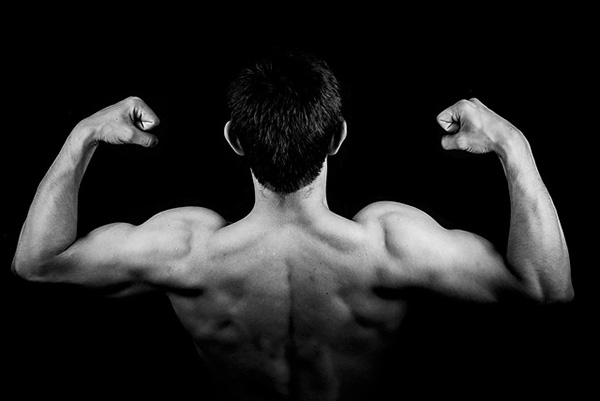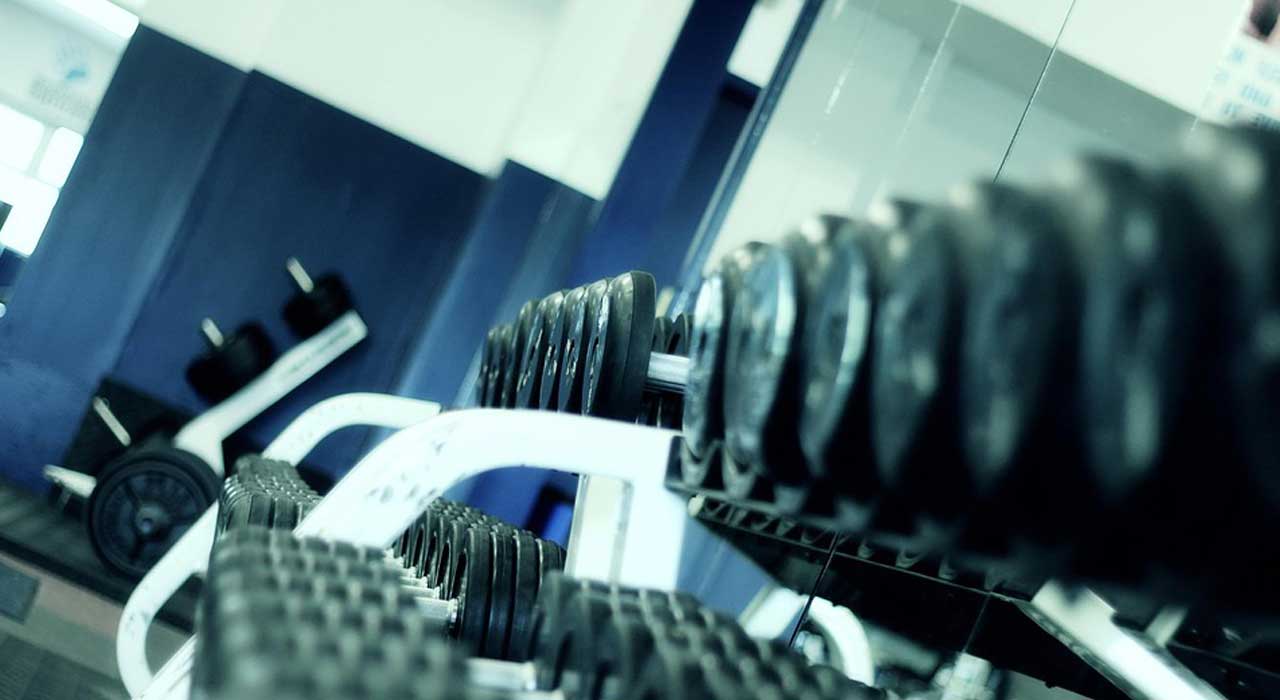If you’re a gym newbie, choosing the right exercises can be a minefield, so here are TRAIN’s top weight-room tips to build muscle for beginners and achieve the perfect physique.
If you read lots of strength training articles intended for intermediate and advanced guys – and you’re still a beginner – you might find yourself disappointed with the lack of basic information.
There may be tons of talk on sets, reps, progression schemes and the like, but the authors often assume you already have a basic idea of the exercises you’re going to use.
That assumption is fine for lifters who’ve already put in a few years in the weight-room, but what about you? Any beginner needs to understand the basic movements that work for his or her body. Here are a few basic considerations that will help you plan out your routine.
The exercises that build muscle for beginners
Whether you’re an aspiring bodybuilder, a soon-to-be powerlifter or even just a newbie gym rat who wants to look better, your goals are basically the same – build muscle and strength. To that end, you’ll need to choose a few bread-and-butter movements to form the cornerstone of your workouts. Unless you’re permanently injured or missing body parts, these are going to be the squat, press and pull.

Compound exercises
Squatting
When it comes to squatting, nothing beats the barbell back squat, but even then there are different variations to choose from. You can place the bar high or low on your back, you can vary your foot placement from ultra-wide to ultra-narrow, and while I always want to see lifters squatting at least to parallel, your flexibility may allow you to nearly touch your ass to the floor.
Rather than focusing on working specific muscle groups, though, just pick the form which allows you to use the most weight and progress the fastest. For most guys, a moderately wide foot placement, a low bar position and just-below-parallel depth are going to be ideal – but don’t be afraid to play around with it!
Flat pressing
For pressing, I like the flat barbell bench press for anyone with healthy shoulders. If you’re beginning your training with pre-existing shoulder issues, however, or if the flat bench just doesn’t feel right, feel free to swap it for incline presses or decline presses at a slight angle.
Stick with the barbell, though! Advanced guys may need to worry about the extra ‘stretch’ and pec recruitment they get from dumbbell presses, but when you’re first starting out, you don’t want to rely on exercises that limit the weight you can use.
Overhead pressing
In addition to some form of benching, you should try your hardest to find some form of overhead pressing that doesn’t aggravate your shoulders. Again, I like the most basic move, the standing, strict military press, but not everyone can do it without shoulder pain. If that’s you, the seated dumbbell overhead press is a fine substitution.
Whatever you do, though, don’t substitute the seated barbell press for the military press just because you don’t want to stand up and sacrifice some weight on the bar. Lift heavy, but don’t let your ego get in the way of proper program design!
Pulling
Just about everyone’s mainstay pulling exercise should be the conventional deadlift. Guys with football backgrounds may favor the clean, but I find that it’s far too technical to allow for constant progression, and you’ll never even approach the kinds of weights you’ll be able to lift on the deadlift.
If you can’t do the conventional deadlift without aggravating your spring – even with a neutral back and great form – swap it for the wider-stance sumo deadlift. Sumo isn’t as great for building overall strength and mass, but it’s far better than not deadlifting at all!
Accessory or isolation movements
Those four movements – the squat, flat press, overhead press, and pull – will pack on more mass and develop more overall strength than anything else, and just about every beginner should spend half of their gym time or more on just those exercises.
However, there are still plenty of other exercises that can help fill in the gaps and produce a well-rounded physique.
Lats, traps and upper back
First and foremost you’ll need to pick a few movements for your lats, traps and upper back. These muscle groups will make you look wide, thick and powerful, and they’re crucial for stabilizing your entire body when performing any heavy upper-body or lower-body lift.
In general, you’ll want to pick some sort of row, some kind of pull-up, and if you’ve got some energy left over, some kind of shrug.
Opt for free weights over machines – at least until you’ve put in some time with the basics – and make sure you’re progressing in weight and reps just as you should be with your main exercises.
Pressing
Next you’ll want to pick some accessory pressing movements. While you won’t need a ton of extra pressing volume on top of your benching and military pressing, you will want a little extra work for your chest, shoulders and triceps.
I really love dips myself, and I think anyone with healthy shoulders should do them religiously. As far as other free-weight movements are concerned, I’d go with a couple of different dumbbell presses. You can pick between flat, decline, incline, overhead and all angles in between – just make sure you’re consistent with your setup, and as always, strive for more weight or reps every session.
Biceps, triceps, calves and abs
Finally, you’ll probably want to include some extra work for the ‘show’ muscles – the biceps, triceps, calves and abs. For biceps and triceps, there is no need to take the advanced bodybuilder route and try out 100 different variations of curls and extensions. The basics are more than enough to build muscle for beginners.

Most guys have success with basic dumbbell or barbell curls, as well as some hammer curls and reverse curls for forearms. For triceps, stick mainly to cable extensions with various attachments. They’ll allow you to go decently heavy without trashing your elbows.
For calves, the choice is obvious – calf raises! One seated and one standing variation are more than enough, and there’s no need to fuss over different machines, angles and the like.
I’ve found that every guy with great calves fits into one of two categories: he was blessed with genetically huge calves and never even has to train them, or he brought them up from nothing with some of the most intensely painful, calf-burning workouts imaginable. When it comes to these stubborn muscles, your intensity and pain tolerance matter far more than your exercise selection!
Finally, you should train your abs the way you train any other muscle – with heavy weight! Unless you just really enjoy the satisfaction of a stomach-torching ab workout, stick to heavy sit-ups and side-bends. Other than losing body fat, that’s the only thing that’s going to make your abs ‘pop’ a little bit more, and the heavy work will actually make your core stronger for squats, deadlifts and other heavy movements that require full-body stabilization.
Bringing up your weak points
Now you know all the basic exercises you need to start building mass and strength – but what about your weak points? To put it bluntly, if you’re enough of a beginner to need this article, you don’t have weak points – everything on you is weak!
You shouldn’t feel down about that since you’re just starting out, but it’s the straight truth.
Even if you begin with disproportionate strength levels between your upper and lower body, between your squat and deadlift, etc., you can’t really tell what’s weak until you’ve trained for a period of time.
Only once you get to the intermediate level you’ll start to see real weak areas in your lifts and in your physique. But, you can’t possibly develop or recognize these kinds of weak points until you’ve spent a couple of years squatting, pressing, pulling and building a base of muscle mass.
So for now, treat everything like it’s weak, and leave no stone unturned in your quest for the perfect physique!
For more articles on how to build muscle for beginners, nutrition tips, and workouts, get TRAIN magazine direct into your inbox every month for free by signing up to our newsletter
Or, if you’re ready, you can check out our muscle building workouts section to get started on your journey







